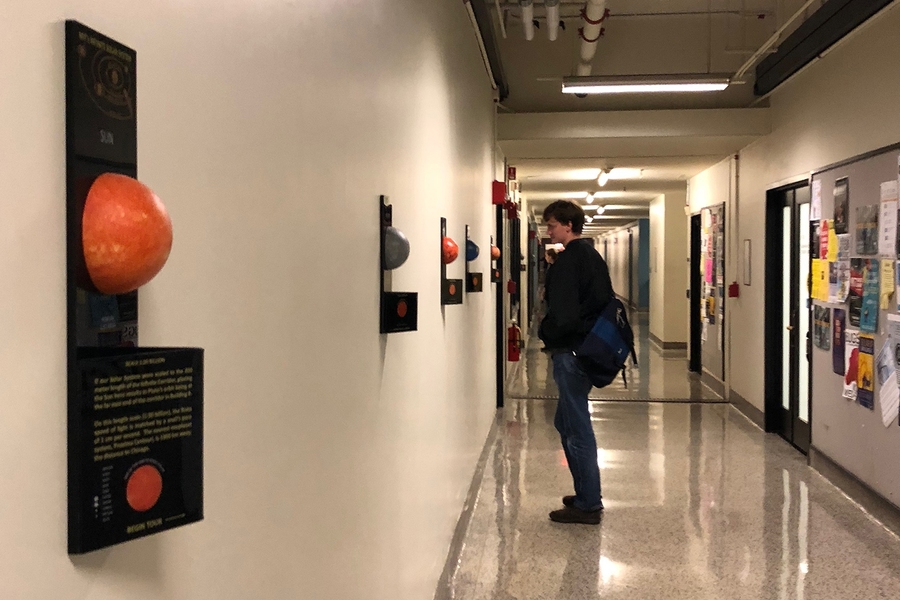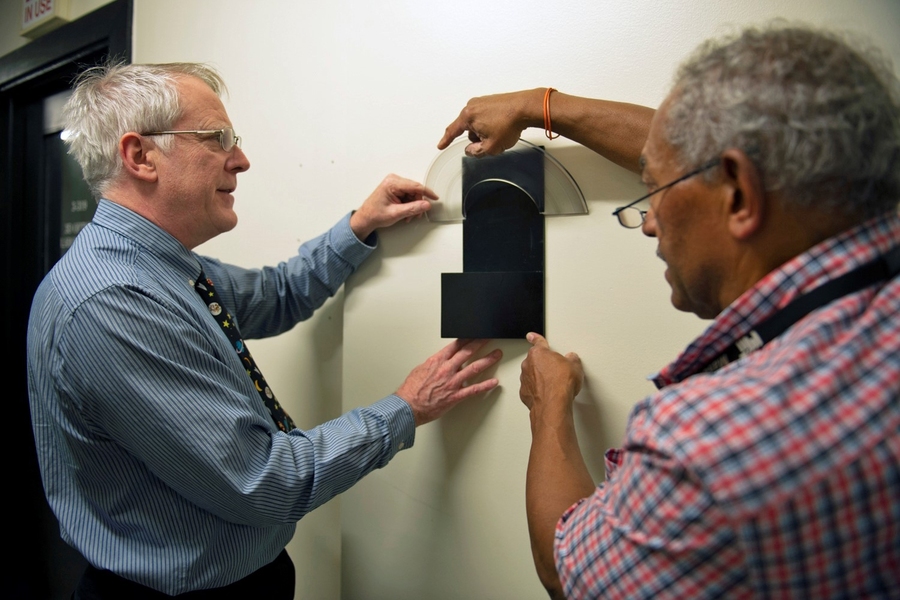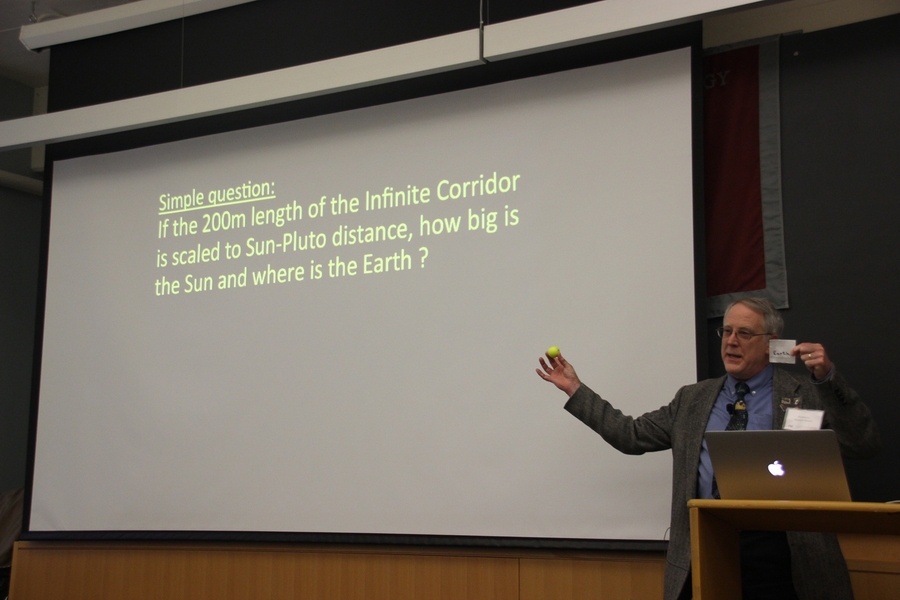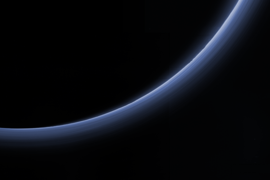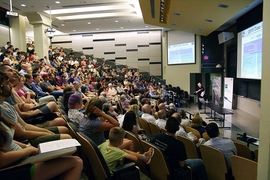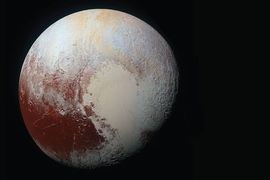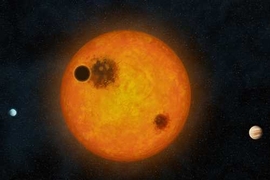Last week, Professor Richard Binzel led a group of MIT space enthusiasts on a tour of our solar system — now installed on the third floor of the Infinite Corridor.
With the installation, Binzel, a professor in MIT’s Department of Earth, Atmospheric and Planetary Sciences (EAPS), realized a decades-long dream to display the solar system to scale and spark enthusiasm for planetary and space research. For many years in the fall semester, Binzel taught an introductory class on the solar system in which he asked students to plot out the planets along the Infinite’s 200-meter length, which equates to one thirty-billionth the length of the solar system.
“My students always loved the assignment about determining planetary distance from the sun along the Infinite, and I thought, wouldn’t it be great to have the solar system displayed all year round?” said Binzel.
The sun is positioned at the far west of the corridor in Building 7. Mercury is located a mere 1.9 meters to its east. Venus is 3.6 meters away from the sun; Earth is 5.0 meters. Pluto, though its planetary status is still in question, would be 197 meters away at the corridor’s far end in Building 8.
“Of course, I am biased toward the icy dwarf, Pluto,” said Binzel who is an expert on asteroids and ground-and space-based observational techniques.
He is also a co-investigator on NASA’s New Horizons mission that launched a spacecraft in 2006, and journeyed for nine years to reach Pluto and the Kuiper asteroid belt. On Jan. 1, 2019, the New Horizons spacecraft will fly by Ultima Thule — an object roughly 25 miles across and whose name fittingly means “beyond the known world,” as it is 1.6 billion kilometers beyond Pluto.
“If we made another plaque for Ultima Thule, I suppose it would be hanging just outside the window in Eastman court,” said Binzel.
Under the auspices of the School of Science, Binzel enlisted the help of Todd Robinson, a campus planner with the MIT Office of Campus Planning, and Arthur Lue, a technical staff member in the Space Systems and Technologies Division at MIT Lincoln Laboratory, to turn this assignment into reality.
“This was an opportunity to work directly with some of the brightest minds in the field. I jumped at the chance,” said Robinson who oversees planning projects related to signage.
Lue executed the 3-D models that adorn the signage for each planetary and astronomical object along the Infinite Solar System installation.
“I've wanted to become involved because making scale models of the solar system has been a bit of a lifelong obsession,” said Lue, who has a 3-D printed moon collection.
Although astronomy is a passionate pastime for Lue, it is also his life’s work. At Lincoln Laboratory, Lue models astrodynamics, or the orbital physics of objects in space, such as active satellites to predict how they can avoid the ever-increasing amount of space junk, asteroids, and other debris surrounding the Earth.
He’s also an expert when it comes to 3-D design and printing. Designing the full set of objects took several weeks. Then Lue sent out the files to be created by an on-demand 3-D printing company — a process that took roughly eight days to manufacture each 4.3-cm-diameter model.
“See if you can spot the hack on Earth,” said Binzel mysteriously, as he led a tour down the Infinite in advance of the phenomenon known as MIThenge.
The projects’ creators chose to unveil the installation on Nov. 9 to coincide with the Infinite Corridor’s alignment with the setting sun, which illuminates the 200 meters of hallway for several minutes, much in the same way that Stonehenge appears at the vernal and autumnal equinoxes. However, the clouds obscured the view for event participants that evening. “Now you know the pain of an astronomer,” Binzel joked.
The Infinite Solar System will remain on the third floor for the next two years, but Binzel said he’s hopeful that the installation will generate enough interest to earn its place among the campus’ most beloved-art.
At this scale, the speed of light could be represented by a snail’s pace of 1 centimeter per second, said Binzel. Therefore, walking at a normal clip across the Infinite Solar System would mean traveling faster than light.
“I am going to love saying, ‘If you’re late for class, walk the third floor of the Infinite and get there faster than light speed,’” he said.
